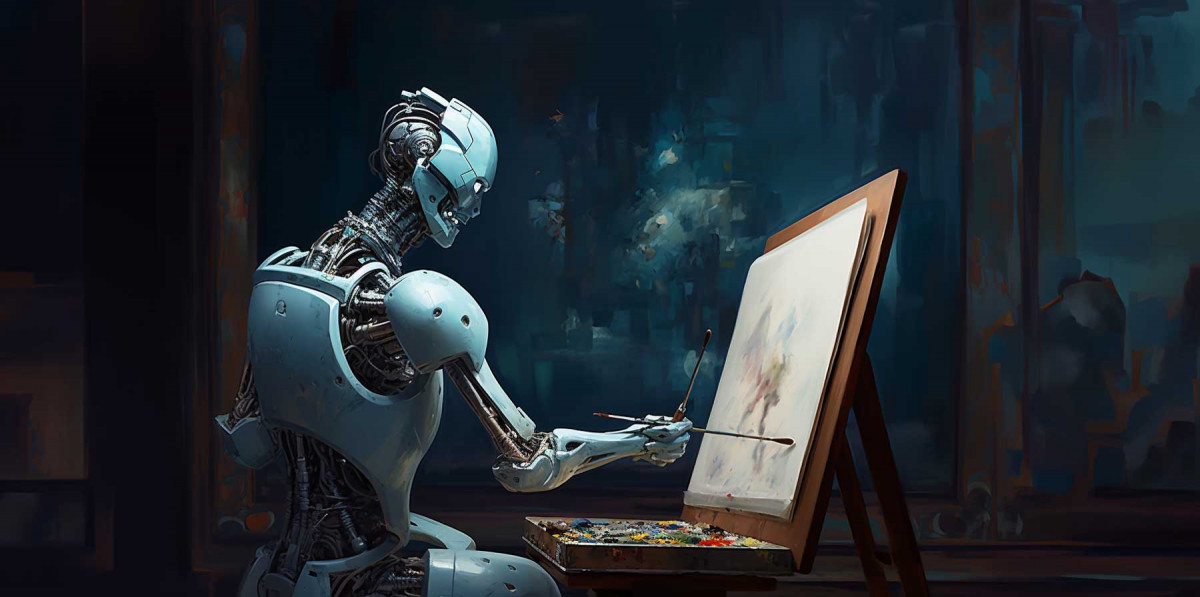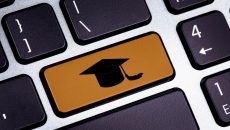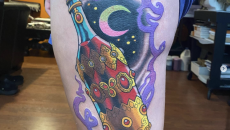(Photo courtesy of: Elegant Themes) “AI art has gotten out of hand for many people.”
Ian Synge
Connector Contributor
AI has begun to infiltrate creative works at every level – writing, drawing, voicing, and even reconstructing faces. All of these have worrying consequences, to various degrees – but I believe art is the field in most pressing need of intervention at the moment, vulnerable as it is.
Admittedly, when AI art first came to my attention, my reaction was mostly positive. The idea of being able to create whatever came to mind, despite my limited artistic capability, was a captivating thought, and I spent some weeks experimenting with the tools available.
I soon, however, abandoned the idea. While I wish I could say it was for the right reasons, in reality it was that it managed to frustrate me more than anything else.Certain aspects never quite lived up to my desire. This combined with the money required for prolonged use of the AI tool I had chosen, I realized that getting out while I was ahead was probably for the best.
Since then, I have kept up with the conversation about AI art, mostly due to me following several artists online.As I listened to their arguments with AI ”artists”, I began to realize that there were far more worrying implications in the tool that I had thought benign at first glance.
I won’t bother pontificating about the ”integrity” of art, or the ”soullessness” of AI or even the quality of what it produces – all are arguments I have seen fall on deaf ears. Because I want to reach those who staunchly defend their right to generate art without abandon, I wish to emphasize the tangible consequences of their actions.
Artists have never been compensated well. We’ve all heard of ”the starving artist” with famous figures like Van Gogh coming to mind; but that’s not simply because of the times they lived in. As recently as six years ago, a 2017 study by Artfinder reported that a ”full three-quarters of artists made $10,000 or less per year from their art” in the U.S.. If that doesn’t mean much to you, well, here in Massachusetts, a living wage is nearly six times that.
That, however, was when artists didn’t have to compete with AI. Questions of whether the method produces quality artwork aside, there can be no denying it produces quantity.Statistics taken by Everypixel Journal show there were ”more than 15 billion images created using text-to-image algorithms since last year.” 15 billion. Nearly twice as many images were created as there are humans on earth.
Understandably, artists are very worried about the state of their field going forward. Their problems are threefold:First, potential customers will be more inclined to use AI than to enlist their services. Even if the final product is worse, and requires many repeated tries to get even
close to what the user desires, they will likely still believe it cheaper than going to a human artist – even if that might not actually be true.
Secondly, those using AI may begin to sell these images as well,likely at much cheaper prices, given how easily they can churn them out. Since artists need to keep their prices high enough to actually make something off of the scant few commisions they might get, they won’t be able to compete.
Finally, we have plagiarism – both the instances where someone feeds an image into the generator to replicate it, , and, the far more encompassing problem, that these image ‘generators’ are actually trained on thousands of different artists’ images. And none of the artists get credit for this.
In other words, the rising prevalence of AI art is going to have a drastic impact on the ability of artists to actually make a living off their artwork. Furthermore, it also decreases the amount of new artists joining the field – after all, what’s the point?
”But wait,” I hear, ”Isn’t this just progress? We’ve seen this before – advances in technology leading to craftsmen getting angry. Isn’t it still for the best to progress?”
…Yes, and no. I personally believe in the progress of technology, whenever possible – it’s why I will never see AI itself as a bad thing, no matter how many worrying possibilities emerge. But all the same, the earlier advances were for the sake of material goods, things needed to survive. Now, however, technology is in danger of encroaching on creative works – and if humans stop creating, what’s the point?
What I wish to ask of you is this: think about the consequences. Ask yourself if careless production of AI images could end up smothering the creativity of others, and if what you’re doing is truly worth the usage of such a tool.




